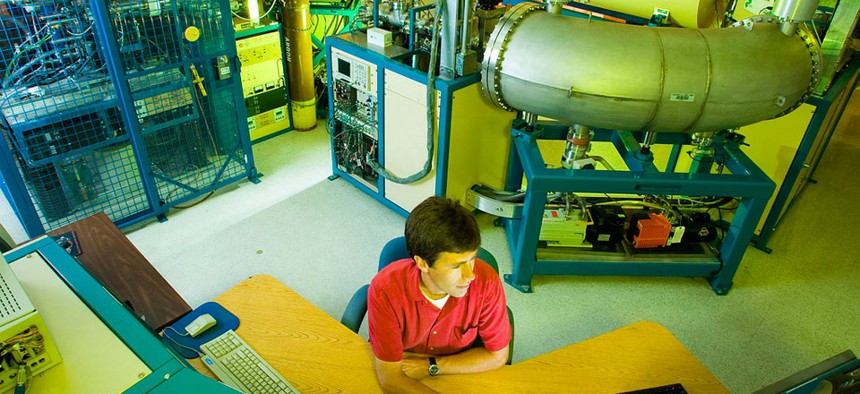Why Did This Federal Lab Pay 42 Different Prices for the Same Computer?

Biological analysis: Ted Ognibene analyzes data at the Lawrence Livermore National Laboratory on his desktop computer. Lawrence Livermore National Laboratory
Energy Department has attempted to standardize equipment buys, but IT purchasing remains problematic.
The Energy Department could save $2 million a year by better managing its information technology hardware, according to the agency’s inspector general.
One of the problems uncovered by the watchdog is a wide variation in the prices the department pays for the same technology across and even within agencies.
The Lawrence Livermore National Laboratory, for instance, paid 42 different prices -- between about $900 and over $2,000 -- for the same desktop model in 2012, the IG found. The machines did, however, have varying configurations.
Since previous audits, the department has to some extent tried to standardize equipment buys, but IT purchasing remains problematic.
The Lawrence Berkeley National Lab, for example, bought nonstandard administrative machines or configurations 100 percent of the time, according to the IG report dated Oct. 30 and posted publicly this week.
“The site paid about $261,800 more than necessary for its administrative desktop and laptop computers in just the single year we reviewed,” the IG said.
Together, the eight sites the IG reviewed bought nonstandard desktops and laptops more than 75 percent of the time, which cost about $1.7 million in extra spending.
The department as a whole spent more than $125 million on IT hardware in 2012, including servers, desktops, laptops and printers, according to the report. The report, however, noted the figure isn’t precise because divisions within the department did not thoroughly track what they spent -- another problem the department faces.
“The department had not effectively managed its IT hardware acquisition process or fully developed and implemented an IT supply chain risk management program,” the report said. “As such, we determined that the department spent nearly $2 million more than necessary in FY 2012 at just the eight sites included in our review.”
The department agreed to continue standardizing equipment and to require agencies to provide justification for deviating from those standards. It also vowed to better coordinate IT procurements between headquarters and field offices.






